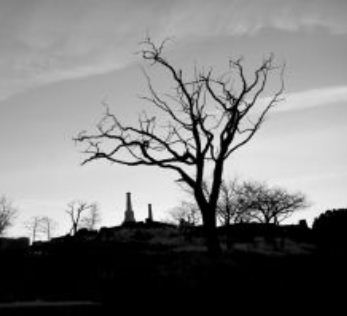Death Anxiety
If there exists one experience which binds our human race of different cultures, color and ethnic groups from around the world, throughout the centuries that is death. Death is something we all must face, no amount of wealth and power can help someone escape it. No exercise, diet regimen, meditation techniques will work for it. It is the great equalizer. Sigmund Freud (1856–1939), who is known as the Father of psychoanalysis postulated that people express a fear of death; he called it thanatophobia. However, he believed this was merely a disguise for a deeper source of concern. Carl Jung argued that all major world religions represent complicated systems of preparation of death.
Some people view death as something threatening and incomprehensible while others experience it as a natural end point of life that may even serve to give meaning to life itself. These differences have major ramifications how people deal with fundamental existential questions concerning meaning of life and the possibility of afterlife. All the religions in the world offer a framework of existential question of death and dying individuals. These religious attitudes may be important predictors of the type of death attitudes people develop. Social Scientists have presented a multidimensional model to examine relations between death attitudes and religious attitude. A number distinctions within the fear of concepts of death and death acceptance resulting in 5 different death attitudes a) neutral acceptance, involving the view of death as an integral part of life b) approach acceptance, a positive outlook on death rooted in a belief in a happy after life, c) escape acceptance where death is a welcome alternative to a life full of pain and misery d) fear of death, involving feelings of fear evoked by confrontations of death and e) death avoidance involving avoidance of thinking or talking about death in order to reduce death anxiety”

Death anxiety is an emotional reaction involving subjective interest and unpleasant feelings associated with designing and predicting various stages of death. Though fear of death and death anxiety are often confused with each other, anxiety is a subjective mode including fear, doubt and tension however fear is an emotional response against a threat. All major world religions and philosophies have their views about death. Isaac Asimov the U.S. science fiction novelist and scholar (1920–1992) said, “Life is pleasant. Death is peaceful. It’s the transition that’s troublesome.” Pubilius Syrus (100 B.C.) stated in Maxims, “The fear of death is more to be dreaded than death itself.” The following statements from Bhagavad-Gita (250 B.C. – 250 A.D.) in chapter 2 is apt to be quoted here, “For certain is death for the born and certain is birth for the dead, therefore over the inevitable thou should not grieve.” Death is more universal than life, everyone dies but not everyone lives. A well said statement by A. Sachs
There are various studies done on adolescents and death anxiety. Estimates from the United States indicated that approximately 90% of adolescents in junior or senior high school have known a family member or friend who has died. It may also lead to lack of family support, income and change in living situation. The negative effects of adolescent bereavement may include but are not limited to shock, numbness, guilt, confusion, depression, fear, loneliness, anger, difficulty in sleeping, hallucinations, changes in study habits, feelings of vulnerability, fear of intimacy, disbelief, and a sense of hopelessness.
Extensive research has also been conducted on the death anxiety and gender differences. Women reported significantly higher levels of death anxiety and extrinsic religiosity. Gender differences in extrinsic religiosity were partially explainable by gender differences in death anxiety. A study conducted which also shows that individual who have little or no death experience would tend to have a greater death anxiety level.
Religion is a source of strength and help in stressful situations. The spiritual support offered by religion may be most helpful in depression and lower self-esteem during life’s stressful situations. The dying process is the most stressful condition, which someone goes through in their life. Although it is also studied that the belief in God will often intensify during such dangerous times and then decline than the pre-event, when people know that they are recovering. Distinct from tangible human relationships religion offers comfort to some respondents by proving a personal relationship with their divine Maker. Those who have reported such relationship can freely express their thought, prayers and feelings to the supernatural when friends and family do not understand and show lack of empathy with their emotional states. The understanding of God as a supportive partner is associated with positive mental outcomes in the hospice services.
The studies have investigated the relation among religiousness, spirituality, and fear of death in order to test the hypothesis that there are two distinct ways of successfully managing death anxiety in old age. As expected, religiousness in late adulthood served as a buffer against fear of death.
By
Glory Christian